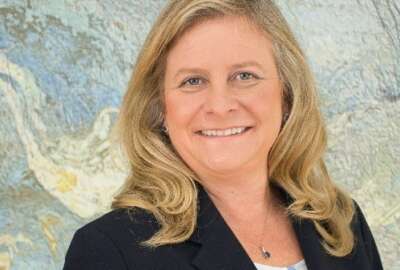
Using machine learning to ‘automate’ employee expertise
Engineers have long had tools such as computer-aided design and a lot of vendors provide CAD modeling software. But ARPA-E is going beyond that.
Machine learning and artificial intelligence were intended to make people more productive, not replace them. The tools are ultimately aimed at engineers who want to develop ways to solve problems more efficiently, at least that’s how the Advanced Research Projects Agency — Energy (ARPA-E) sees it.
Engineers have long had tools such as computer-aided design and a lot of vendors provide CAD modeling software. But ARPA-E is going beyond that. Program Director David Tew said his agency hopes to “automate” the intuition and expertise that engineers bring to the table.
“Data is a significant challenge. But fortunately, at the same time, in addition to data, we have the basic laws of physics, the conservation of mass, the conservation of energy, that we can use and effect to create artificial data that we can use to derive some of these tools,” Tew said on Federal Monthly Insights — Artificial Intelligence/Machine Learning.
ARPA-E needs these tools but creating and testing them come at a cost. Tew said the goal of the organization’s research effort is to determine whether it’s worth paying for their development.
“A lot of our ongoing projects have machine learning and artificial intelligence elements. At the same time, we just launched a new program called DIFFERENTIATE that’s actually focused on the development of these tools,” he said on Federal Drive with Tom Temin.
The acronym stands for Design Intelligence Fostering Formidable Energy Reduction and Enabling Totally Impactful Advanced Technology Enhancements.
The cooperative agreement — essentially a grant program — recently closed its solicitation and selections will be made over the next month, from which ARPA-E will either encourage or discourage people to submit proposals. Tew said he hopes to have the full effort up and running by February 2020.
DIFFERENTIATE is a set of test beds to develop an algorithm for helping engineers leverage their tools. It will have input from energy companies as well as academia.
“We hope the ultimate products will be open source software, commercial software, as well as proprietary software algorithms that large companies might use to design their products,” he said.
Human-centered design for a streamlined experience
Machine learning can also be useful at the Department of Veterans Affairs. The Multi-Channel Technology directorate of the Veterans Experience Office (VEO) has co-developed several technologies and tools with veterans or employees which are focused on improving customer experience.
“Many times in government, industry or even in the private sector, when people are building services and products, they don’t really focus on their end user, and really understanding what that end user needs,” said Denise Kitts, director of the Multi-Channel Technology directorate. “So the veterans experience office, what we try to do is focus it on the veteran’s experience, and help VA design and build services that truly meet their needs.”
Related Stories

Army exploring AI combat possibilities while prioritizing quick COTS adoptions
“And what was really interesting was even though we had all these websites, veterans really thought, what they expected to do was to go to our main website, which is VA.gov, and be able to access all the services they need from VA.gov,” she said. “Which is kind of interesting because today, you know, where prior that VA.gov had been more of our inward facing website where we had a lot of program information on it, you can do a lot of things related to self-service.”
As a result the site was re-tooled and relaunched in November, and VA is continuing to use human-centered design to consolidate customer information from about 80 sources to a single customer profile that is the same from one contact center to the next.
Copyright © 2025 Federal News Network. All rights reserved. This website is not intended for users located within the European Economic Area.
Amelia Brust is a digital editor at Federal News Network.
Follow @abrustWFED




